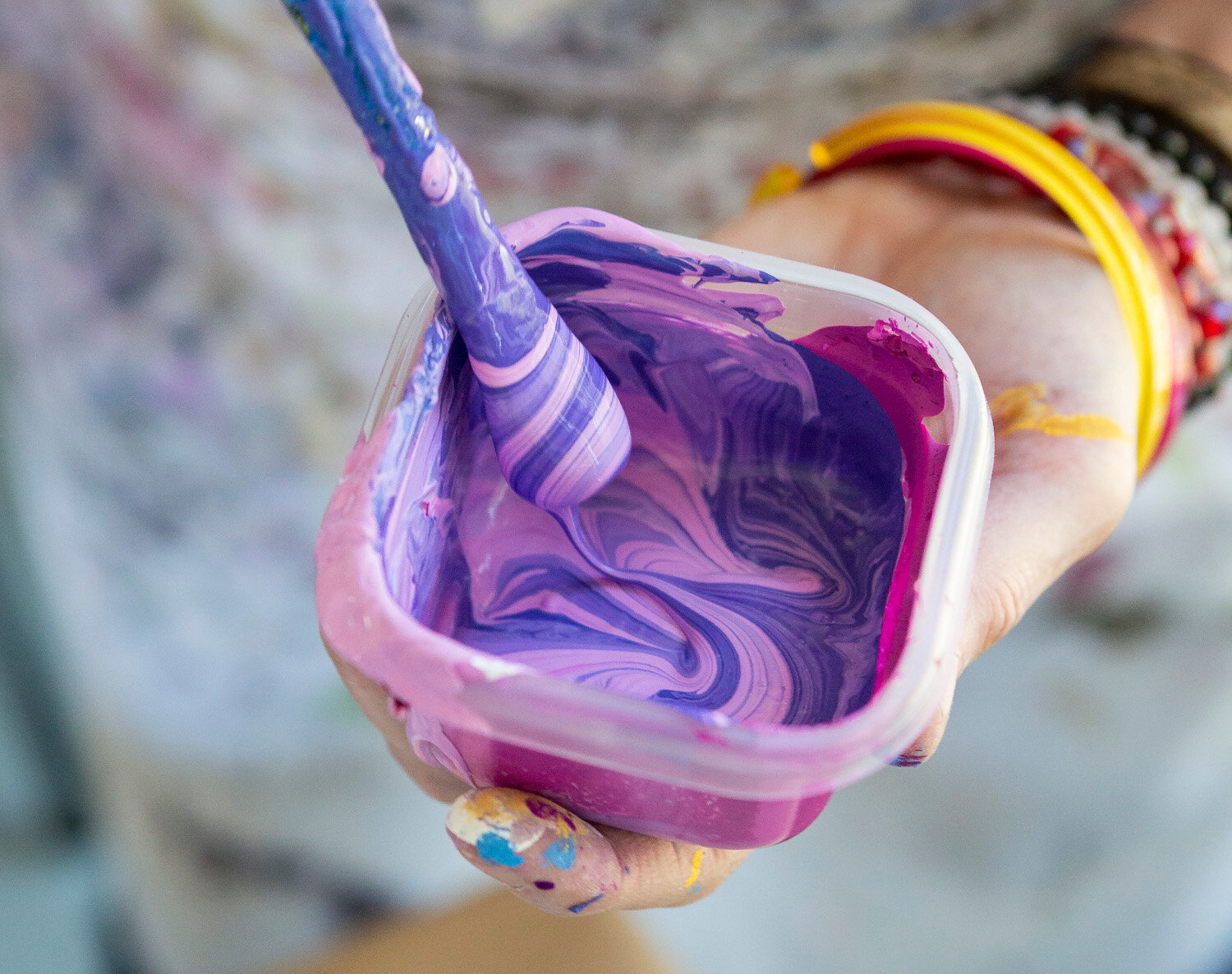
Bio
I grew up in Cleveland, Ohio, the daughter of an art teacher. From an early age, I wanted to be a painter. Our basement was piled high with paint trays, cans of brushes, stacks of watercolor paintings, and more newsprint than I could ever fill. I left the Midwest at nineteen for art school in New York, and I’ve been showing my work professionally in galleries and museums since the late 1970’s.
Early in my career, I took a deep dive into the social history of the domestic sphere, deconstructing the myth of “mom and apple pie.” Along the way, I met the ghost of Betty Crocker. Betty is a fictional character invented by the General Mills Corporation in 1921. She was the face of the brand, providing “expert” advice to a new generation of (female) consumers. I saw her in my mother, a home economics teacher who strove mightily to meet Betty’s dutiful expectations. Like it or not, I was Betty Crocker’s daughter. A critic from the Houston Chronicle called my paintings from this time “the work of a mad housewife gone awry.” She was right—I had inherited the underlying biases of Betty’s patriarchal legacy, and I needed a new paradigm. We all did.
“In a flower, in a beetle, every line, every form, every color has arisen from a deep necessity.”
Betty Crocker wasn’t the only toxic legacy I inherited. In 2002, at work on my MFA in Boston, I expanded my focus beyond the commercial gallery world, designing my first fabric patterns and developing an interdisciplinary color curriculum. This allowed me to confront another debilitating paradigm—the self-fulfilling myth of the “starving artist.” Generation after generation, aspiring artists are seduced by the romantic delusion that art belongs on a pedestal, “pure” and distant from everyday life. You sell your work in a gallery, or not at all; anything else is selling out. Art departments perpetuate this myth by turning a blind eye to anything resembling business training. But authenticity doesn’t have to be at odds with entrepreneurship. I founded LU+CO Studios to support a more sustainable paradigm, connecting fine artists with new audiences and markets celebrating “art for daily life.”
If Betty and the starving artist are two figures that haunt me, color is my muse, a thread of awe and interrelationship that runs through my work. I often describe color as “hidden in plain sight.” It is fundamental to our experience of the world, yet it mostly escapes notice—a connective tissue, like love or sunlight, intrinsic to our well being and easy to take for granted. As an educator, now based in Houston, Texas, I teach color to students of all disciplines as a bridge between the arts and the sciences, and an essential tool for visual literacy. Color is the perfect vessel for transforming STEM into STEAM, because it locates the arts at the intersection of science, technology, engineering, and math.
In the midst of all this, I’m still restless, still seeking. I sometimes confess, not without humor, that I’m really a closet theologian. No matter which hat I’m wearing, I’m intrigued by basic questions about the interconnected nature of life. I yearn for new forms of community, new depths of emotional resonance, in a world at odds with itself.
